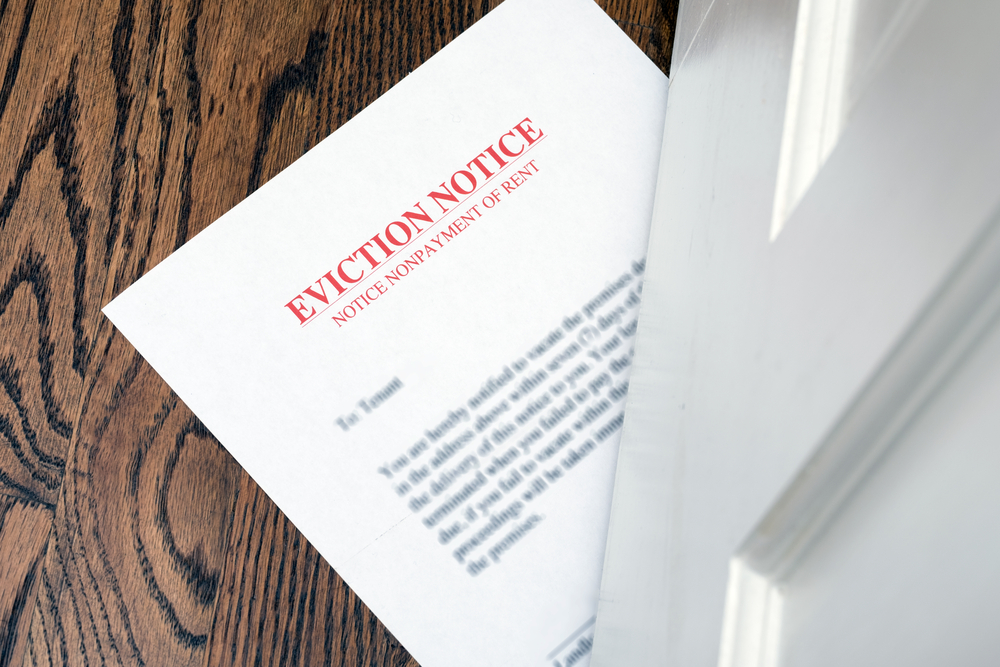Buy To Let
Dramatic rise in number of no fault evictions

The number of households threatened with homelessness after being served a Section 21 notice – known as a no fault eviction – has risen 168% in just a year.
Between 1 October and 31 December 2021, 5,260 households in England were threatened with homelessness as they were served a Section 21 notice to end an assured shorthold tenancy.
According to the quarterly statutory homelessness figures published by the Department for Levelling Up, Housing and Communities (DLUHC), this is an increase of 168.4% from the same quarter in the previous year.
However, DLUHC suggests this rise may partially reflect the removal of restrictions on private rented sector evictions from May 2021.
But, it noted that this figure is also above the level recorded between October and December 2019, before Covid took hold.
In the final quarter of 2019, there were 3,830 cases where households received a S.21 notice, so the latest statistics show there has been a near 40% rise pre and post-pandemic.
In total for Q4 2021, DHULC revealed 31,090 households were assessed as being threatened with homelessness and therefore owed a prevention duty which is up 7.3% from the same quarter last year.
What is a Section 21 notice?
A Section 21 notice is a first step a landlord uses to get a tenant out of a property. It can only be served to those in an assured shorthold tenancy.
It’s known as a no fault eviction as the landlord doesn’t need to have a reason to ask a tenant to leave. But concerns were raised about their use, with tenants saying they received these after complaining about their property or requesting improvement works.
In other cases, landlords wanted to sell to capitalise on house price rises, or they wanted to replace tenants for others willing to pay more.
The Q4 2021 data revealed 8,530 households in England were supported by councils because their landlord was evicting them to sell or re-let the property. The previous peak was 7,680 in Q2 2018.
Alicia Kennedy, director of Generation Rent which campaigns for tenants’ rights, said: “With house prices and rents surging, landlords have been cashing in by selling up or replacing their tenants with people who can afford to pay more.
“The cost of this upheaval is falling on the tenants themselves and stretched local authorities. In its forthcoming White Paper, the government must act to provide a more stable rental market. This means scrapping no-fault Section 21 evictions and ensuring that landlords who want their property back for legitimate reasons support their tenants to find a new place to live.”
Generation Rent previously estimated that blameless evictions cost councils £161m a year. By ending them, it could reduce homelessness by 9%.
In 2019, the government announced it would repeal Section 21 of the Housing Act (1988), which allows landlords to evict tenants at the end of their fixed-term, putting an end to no fault evictions to “protect tenants from having to make frequent and short notice moves, and to enable them to plan for the future.”
However, this is yet to come into effect.
‘Deeply concerning’
Cllr David Renard, housing spokesperson for the Local Government Association, said: “Councils work incredibly hard to prevent the tragedy of homelessness from happening, as well as supporting those who find themselves affected.
“The dramatic rise in the number of ‘no fault evictions’ is deeply concerning, as well as the steep rise in approaches to councils from households in the private rented sector. This is putting additional pressure on homelessness services.
“Councils want to see an end ‘no fault evictions’ in their entirety and are eager to work with government on a plan to safeguard tenants as part of the forthcoming Renters Reform Bill.”